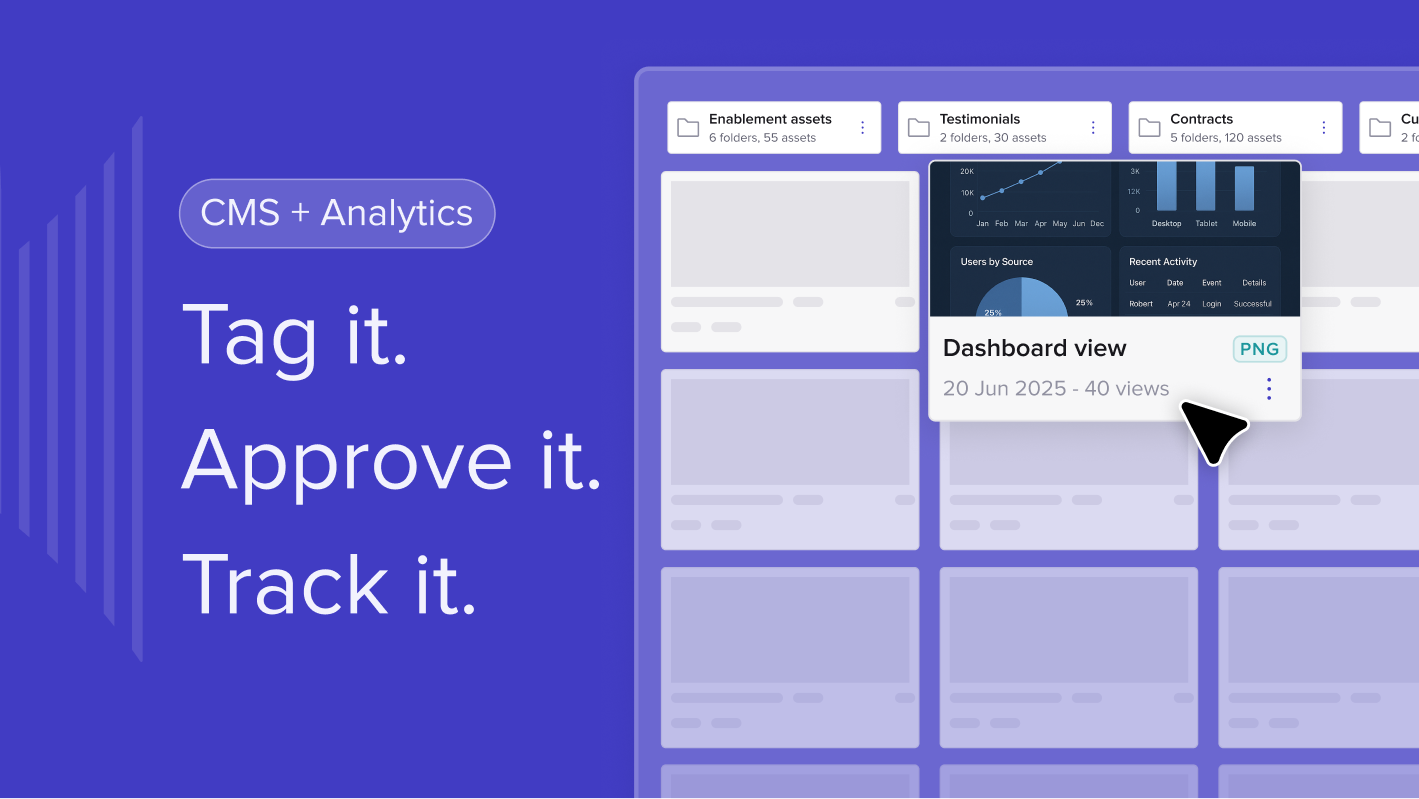Key takeaways
- By 2025, 80% of B2B sales interactions will take place in digital sales rooms (DSRs).
- DSRs personalise the buyer journey, speed up deal cycles and provide data-rich insights.
- Trumpet users see 38% faster sales cycles and 21% more closed-won deals with DSRs.

In this guide:
- What is a Digital Sales Room?
- How Does a Digital Sales Room Work?
- Pros and Cons of Digital Sales Rooms
- Best Practices for Digital Sales Rooms
What is a digital sales room?
A digital sales room (DSR) is a centralised, interactive online space where B2B sellers and buyers collaborate. Think of it as a modern showroom that replaces endless email threads and stale PDFs.
Instead of static sales materials, DSRs combine live chat, video calls, demos and real-time updates in one place. This keeps deals moving and buyers engaged.

How does a digital sales room work?
A DSR acts like a custom microsite built for each buyer. It usually includes:
- Live Chat & Video Consultation: Direct communication channels for real-time interactions between customers and sales representatives
- Service Demonstrations: Interactive showcases provide a tangible understanding of a service's offering
- Booking & Scheduling Systems: Integrated tools enabling clients to book consultations or services conveniently
- Integrated Analytics: Dashboards providing insights into visitor behaviours, preferences, and engagement metrics
- Virtual Showrooms: Digitally crafted spaces allow visitors to explore products or services in a lifelike environment
Platforms like trumpet let you launch a DSR in minutes and auto-personalise it for each prospect.
Consider that the average buyer performs 27 info-gathering sessions before reaching out to a seller. That includes visiting your website, reading reviews, or browsing your content. You can soon see the benefit.
DSRs consolidate and centralise the buying experience – it's a one-stop shop for content, communication, collaboration, and even planning a project.
What are the pros and cons of digital sales rooms?
Pros
- 24/7 access: Buyers engage when it suits them.
- Cost-effective: No physical showroom overhead.
- Personalised: Tailored content builds trust.
- Rich analytics: Track buyer signals and plan smart follow-ups.
- Scalable: Add more products or stakeholders easily.
Cons
- No physical touch: Buyers can’t handle a product.
- Setup costs: You’ll invest time and budget upfront.
- Connectivity needed: Internet issues can block access.
- Learning curve: Some buyers need help understanding how to use it.
Best Practices for Digital Sales Rooms
Digital sales rooms promise to revolutionise the marketing experience. Forget bland, generic emails or adverts – a dynamic, auto-personalised space is the future.
But how do you get the most out of this new sales tool? Let's find out:
1. User-Centric Design
From the welcoming colours to the features on display, your DSR should invite the user in and guide them through your brand. Don't forget – it's the digital equivalent of your storefront or meeting room. You can't offer them a cup of coffee, but you can make your design intuitive.
That means quick loading times, simple navigation, and a layout that gently leads visitors through the experience.
2. Supercharge Interactivity
Elevate the user experience with dynamic elements like 360-degree product videos, video demonstrations, and competitors' tables. Bring your products or services to life beyond just displaying static images and text on a screen.
3. Optimise for All Device
Mobile optimisation isn't optional. According to GoodFirms, 73.1% of web designers say that a non-responsive design is a top reason why users abandon a site. Your microsite should be accessible on a desktop, tablet, or mobile device.
4. Bold Calls to Action (CTA)
Drive conversions by making it clear what steps visitors should take next. Remember the 30-second rule: if I don't know your value proposition and desired outcome in the first 30 seconds on your site, you've failed.
Want a customer to book a consultation or make a purchase? Tell them!
5. Personalise. Personalise. Personalise.
The whole point of digital sales rooms is their personalisation. Include the prospect's name in the headline, tailor the content to their interests, and answer any relevant questions. The more personal it is, the more likely the client will proceed toward a sale.
Join the UK's Leading Digital Sales Room Platform
Trumpet is a leading digital sales room platform loved by sales, customer success, and marketing teams. In fact, we've got over 5,000 users blowing their trumpets about our service!
Book a FREE demo today to explore the ins and outs of our auto-personalised collaborative and trackable spaces. We'll answer all your questions and get you ready for the DSR revolution.
FAQs
Why do I need a DSR if I already have a website?
Your website is for general visitors. A DSR is for qualified buyers and prospects, offering them a tailored space to close deals faster.
How is a DSR different from a shared drive or email?
Unlike static links or files, a DSR is an interactive, live environment. It shows what your buyer views, updates in real time and connects everyone in one place.
Can I use a DSR for onboarding too?
Yes. Many teams use trumpet Pods to manage onboarding, share training and track engagement in one place.
Is a DSR hard to set up?
Not with trumpet. Drag-and-drop widgets, auto-personalised templates and CRM integrations make setup fast.
Who uses digital sales rooms?
Sales teams, customer success managers, marketers and partnership teams all use DSRs to boost collaboration and keep buyers moving.

.svg)
.svg)
.svg)
.svg)
.svg)
.svg)
.svg)
.svg)
.svg)
.png)
.svg)
.svg)
.svg)
.svg)

.svg)
.svg)
%201.svg)
.svg)
%201.svg)



.svg)



















![How to Get Started with Buyer Enablement [With Examples]](https://cdn.prod.website-files.com/65cf4fecbed2754c2236665d/65cf4fecbed2754c22366bdb_65a5af83e742f76e34ce06f3_Customer%2520Onboarding%2520_%2520Everything%2520you%2520need%2520(2).png)
.png)



.png)



.png)












.png)


.png)


.png)
.png)






